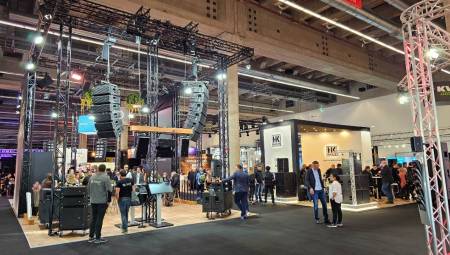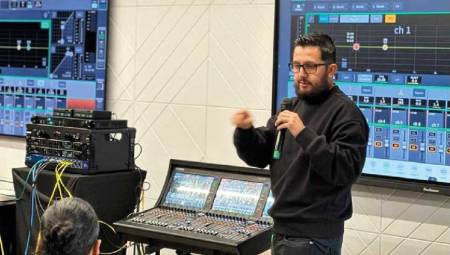 Latin America. A stereo camera microphone that solves a fairly common problem that DSLR users encounter: the capture of focused stereo sound from the filmed object. "The MKE 440 is not just the most compact stereo cannon microphone on the market," said Kai Lange, Sennheiser's product manager, Broadcast and Media.
Latin America. A stereo camera microphone that solves a fairly common problem that DSLR users encounter: the capture of focused stereo sound from the filmed object. "The MKE 440 is not just the most compact stereo cannon microphone on the market," said Kai Lange, Sennheiser's product manager, Broadcast and Media.
DSLR camera operators have always struggled to get good sound with the built-in stereo microphone. The new MKE 440 solves this problem. Thanks to two mini-cannon microphones and a new technique, it records sound from within the camera angle, beating any mini AB, MS or XY arrangement.
"Unlike other stereo camera microphones, it picks up sound from inside camera angles, thanks to its new stereo principle." The result is a well-balanced mix between ambient sound and clearly understandable dialogue. "This allows DSLR users to capture professional stereo sound in one go, saving production time and effort," added Kai Lange.
While these classic settings also capture sound and noise from the sides – including any feedback from the camera operator or the people next to them – the MKE 440's two mini-guns are mounted V-shaped so that they predominantly pick up sound from inside the spotlight and reject most noise that is out of the camera's focus.
The MKE 440's paired mini-guns feature super-cardioid pickup patterns that overlap to create a forward focus. "For example, this allows filmmakers to capture understandable dialogue with enough ambient sound to preserve the ambiance of a scene."
The microphones are designed internally to reduce any noise from use and are protected against wind noise by a stainless steel micro-mesh. In case of strong wind, a special hair cover is available as an accessory.
The compact MKE 440 attaches to the camera shoe. It features a three-level sensitivity switch to suit the softest and loudest sources of sound and has a filter to eliminate low-frequency noise such as wind noise. The microphone is powered by two AAA-sized batteries, with a green ON/off switch LED as a low battery indicator. The LED will glow red about four hours before the batteries run out, ensuring enough time to finish recording.















